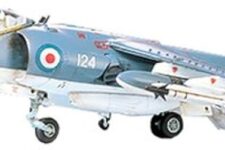Table of Contents
This is one aspect of model making that must be perfect, painting model kit. Any flaws in the painting process stand out and can be difficult to correct.

Model Painting Kit for Beginners
While painting model kit, you will use two types of paint:
The first is acrylic paint. Because this is a water-based paint, you must wash your brushes in water, not white spirit. Acrylic paint is commonly used in’starter kits’ since it is the easiest painting model kit with and can be washed off with water and a paper towel when wet if an error is made (although you have to be quick).
Acrylic Paint For Plastic Models
Acrylic model paint set are a popular choice for hobbyists and model builders who need high-quality, durable, and versatile paint options. These sets typically include a range of acrylic paints that are specially formulated to adhere to various surfaces, such as plastic, metal, and wood, making them ideal for painting models, miniatures, and other small objects.
Oil-Based Enamel For Painting Model Kit
The second type of paint is oil-based enamel paint. This is the most popular variety found in model retailers for painting model kit, and it comes in the most colors, allowing you to ‘color match’ your model for authenticity. It can also be combined as needed to make a one-off color for particular components or areas that require a color that is not available off the shelf.
It is also available in tiny spray cans; more on that later.
Get all of the paint you’ll need before you begin your model. The kit instructions will include a list, and it may also be on the box or packaging; obtain exactly what is recommended and do not assume. If your model shop does not have the colors you require for painting model kit, have them ordered or ordered online.
Brushes
It is also critical to have high-quality brushes in good shape. Any loose bristles or hairs on a brush can cause havoc when painting, especially in little precise areas. I replace any broken brushes before beginning a new kit; brushes are not expensive, and it is a good practice to develop to avoid making mistakes.
Have a good selection of brush sizes ranging from fine to coarse; I have at least six different sizes for different projects.
Extra supplies
You’ll also need the following items:
Painting model kit thinners (for enamel paint)
Paper towels. Make sure the bottle / tub / tray in which you clean your brushes is clean; DO NOT clean brushes in dirty cleanser. After cleaning, pat your brush dry with paper towels.
Masking tape.
There is also a product available that you may ‘paint’ to mask areas prior to painting model kit, which might be handy if painting around transparent glass sections; nevertheless, I find masking tape to be adequate for most applications.
Work Environment
To avoid inhaling paint fumes, the area you are painting model kit must be brightly lit, dust free, and well ventilated, especially if you are using spray paint.
Goggles and a face mask may also be worn, primarily when applying spray paint.
Attempt painting model kit in similar light circumstances to what it will be presented in; you’ll be shocked how much varying light can affect the look of paint and how different your model will look. If you work under a lamp, try to get a daylight effect bulb; this is much easier on your eyes, and the paint will look the same in daylight as it does on your work surface.
Painting advice
Before painting model kit, read the directions thoroughly and search for any sections that require painting BEFORE assembly.
Before using the paint, give it a good stir; matchsticks make affordable paint stirrers, and you may have one for each color.
Attempt painting model kit as much of the part on the sprue as possible.
When painting any pieces (especially little ones), do not overfill your brush with paint; it is better to use a few of light applications than a blob. Too much paint can dull the detail on the plastic and is very hard to remove.
Let the paint to dry completely before assembling; glue will ruin any soft paint; leave it overnight to cure.
Spray paint
Spray paint any large sections to avoid unattractive brush strokes. Hold the can 10 to 12 inches away from the area to be painted and use even strokes from left to right. The goal here is to build up the paint one coat at a time; too much paint in one go will cause it to run (again almost impossible to repair). I find that letting 20 – 30 minutes between applications works well. Repeat until you have a lovely even finish and leave to dry overnight.
If the color you’re painting isn’t available in a spray, use the widest brush you have and paint even strokes in one smooth movement. Do not dab at the area you are painting. Again, strive to build up the paint in a succession of coats.
BEWARE: Brush painting model kit takes longer to dry than spray paint since brushing consumes more paint than spraying, so leave longer between applications – perhaps an hour depending on how much air circulation you have and the temperature of the space you’re painting in.
I would even consider running a test on a piece of spruce to see how long it takes for the paint to become touch dry so you know how long to wait between coats.
Next, examine your directions for any further information regarding painting model kit, especially if you have to mix colors, look out the ratio of one color to the other, e.g. 10:90.
Take your time, fight the impulse to rush through painting model kit, and it will turn out better.
What Is The Best Paint For Plastic Models
The best paint for plastic models depends on a variety of factors, including the type of plastic being used, the desired finish, and the skill level of the model builder. However, there are a few types of paint that are commonly used for plastic models:
- Acrylic paint: Acrylic paint is a popular choice for plastic models because it is water-based, which makes it easy to clean up and less toxic to work with. It also dries quickly and is available in a wide range of colors and finishes. Additionally, acrylic paint is flexible and can adhere well to plastic surfaces.
- Enamel paint: Enamel paint is an oil-based paint that is also commonly used for plastic models. It is more durable than acrylic paint and can produce a glossy finish, making it a popular choice for model builders who want a high-quality, long-lasting finish. However, enamel paint can take longer to dry and may require special thinners or solvents for cleanup.
- Lacquer paint: Lacquer paint is another popular choice for plastic models. It is a fast-drying, high-gloss paint that can produce a durable finish. However, it is also more toxic and requires proper ventilation and safety equipment during use.
Ultimately, the best paint for painting model kit depends on the specific needs and preferences of the model builder. Acrylic paint is a good choice for beginners or for those who want a less toxic, easier-to-use option. Enamel and lacquer paints are better suited for more experienced model builders who want a high-quality finish and are comfortable working with more toxic materials.
Advantages Of Buying Model Paint Sets
There are several advantages to buying a plastic model paint set, including:
- Convenience: One of the biggest advantages of buying a plastic model paint set is the convenience it provides. These sets typically include a range of colors and finishes that are specifically designed for plastic models, making it easy to find the right colors and paint types for your project without having to search for individual paints.
- Cost-effective: Buying a plastic model paint set can also be a cost-effective option, especially compared to buying individual paints. Paint sets often come with a discounted price per paint bottle, so you can save money in the long run.
- Matching colors: When you buy a plastic model paint set, you can be sure that the colors are designed to work together and match well. This can save you time and effort in trying to match colors on your own.
- Quality: Many plastic model paint sets include high-quality paints that are specifically formulated for plastic models. These paints are designed to adhere well to plastic surfaces and provide a durable, long-lasting finish.
- Variety: Paint sets often come with a variety of colors and finishes, including matte, gloss, and metallic paints. This allows you to create a range of effects and textures on your models and miniatures.
- Easy to store: Paint sets typically come in organized containers or trays, making it easy to store your paints and keep them organized.
Overall, buying a plastic model paint set can be a convenient, cost-effective, and high-quality option for model builders who want to create a range of effects and textures on their models and miniatures.




